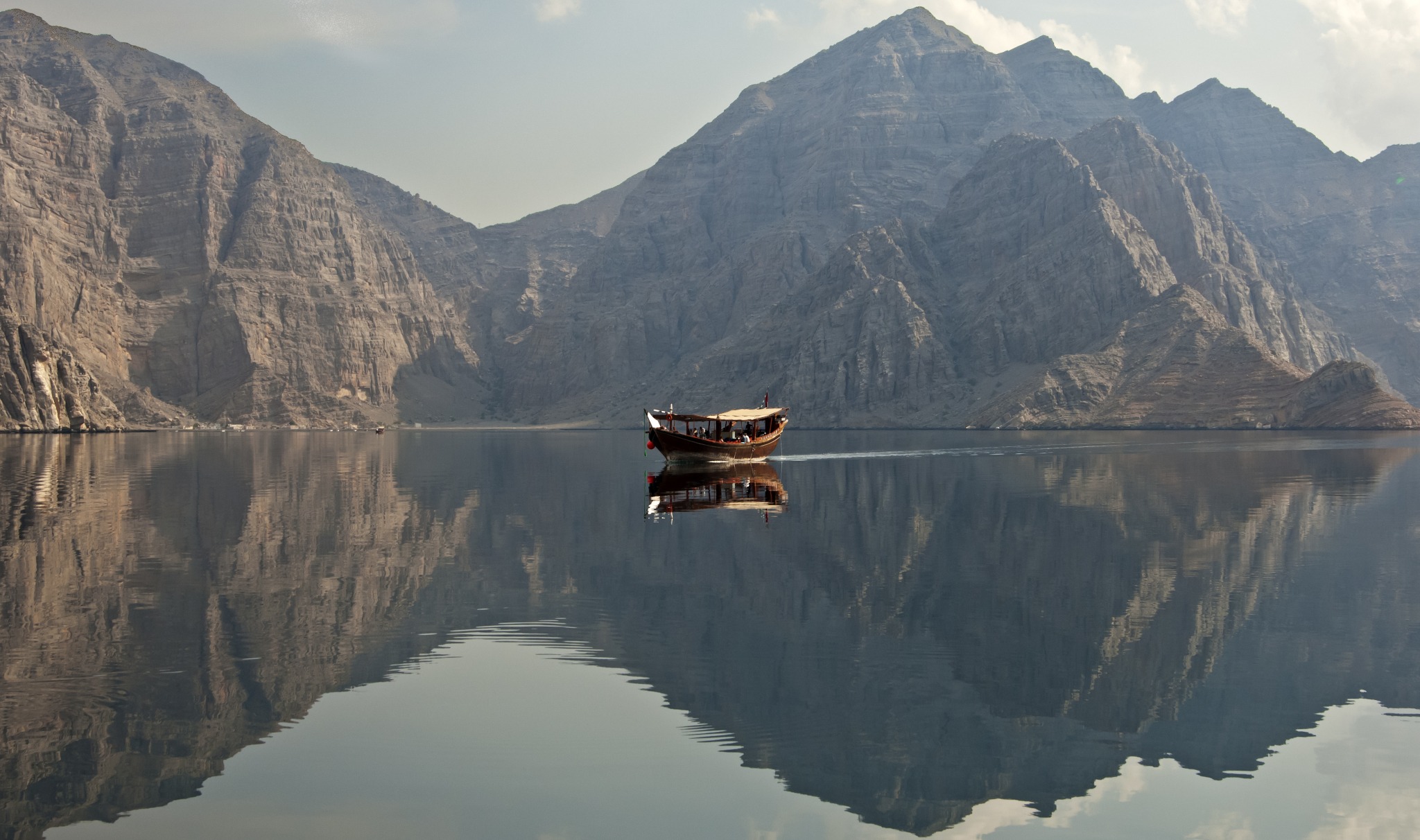Fifty years ago, US troops began building a military base on the Chagos Islands, a British territory in the middle of the Indian Ocean. Its inhabitants, who numbered several thousand, were forcibly removed to make way for a naval station.
They received almost nothing in compensation for the loss of their homeland, but Britain did well out of the deal. The Pentagon gave the Royal Navy a discount on its first nuclear-armed submarine fleet.
This bargain helped Whitehall keep up the pretence of being a great power, bolstering the UK’s permanent membership of the United Nations Security Council even as the British empire crumbled.
But nuclear weapons would not be enough to stay ahead in this new world order. While evicting the Chagossians, UK officials busily conducted another colonial carve-up – this time to ensure continued control of global oil supply routes.
Known as Operation Intradon, it saw a proudly autonomous Arab tribe have their land handed over to a pro-Western dictator, detainees tortured by British troops and a UK special forces soldier dying in a night-time parachute jump.
Yet the episode has been largely forgotten outside of Musandam – a mountainous peninsula overlooking the Strait of Hormuz, a narrow sea lane between Iran and Arabia through which a third of the world’s oil supplies are shipped each day.

Despite living at a crossroads of the global economy as important as the Suez or Panama canals, Musandam’s main tribe, the Shihuh, long resented outside interference and effectively regarded themselves as independent.
Bombarded by the Royal Navy in 1930 “to compel the surrender” of a local Sheikh, any foreign authority over the peninsula had lapsed by November 1970, and Whitehall feared it may become the base for a “potential insurrection”.
The then Conservative foreign secretary Alec Douglas-Home believed some 70 communist guerrillas from elsewhere in the Gulf were hiding in Musandam and using its relative isolation to hatch plots against British interests in the region.
Files found at the UK National Archives show the chief of the defence staff fretted that these dissidents could unleash “an anti-British campaign of terror”.
They were believed to be part of the National Democratic Front for the Liberation of Oman and the Arabian Gulf (NDFLOAG), a left-wing Arab nationalist movement run by Omanis with cells across the region. Their goal was to expel foreign powers from the Gulf.
To prevent this guerrilla group from gaining another foothold, prime minister Edward Heath approved Operation Intradon: a complex plan to take full control of Musandam by force. It involved the deployment of a Special Air Service (SAS) squadron by parachute, by helicopter and by sea – with help from the Special Boat Service and Royal Air Force.
Effectively, Britain would invade Musandam, capture or kill any resisters and annex the area for Oman, with which it shared no land border. If asked by journalists, Whitehall spin doctors planned to portray this as a humanitarian mission to improve “the welfare of its inhabitants whose needs were neglected in the past.”
Prior to the operation, neither Britain nor its newly-installed client ruler of Oman, Sultan Qaboos, had any significant foothold in Musandam. British officials acknowledged as much, noting that the peninsula was a “totally unadministered region” which had seen “years of neglect”.
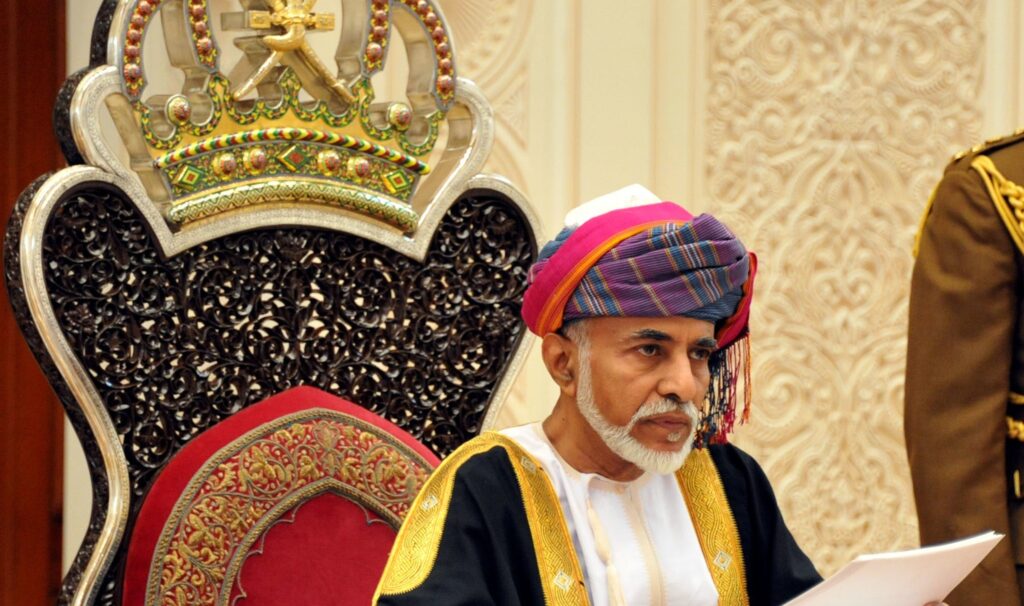
A senior Foreign Office diplomat, Sir Stewart Crawford, admitted: “At present there was no administrative control in this area and the Sultan’s only representative was the Wali [guardian] at Khasab [a port in northern Musandam].” He added: “The population of the peninsula resented any sort of authority and were xenophobic.”
The then commander of British forces in the Gulf, Major-General Gibbs, remarked that he “had already tried putting one man into the area who had been extremely lucky to get out alive, saved by the Sheikh of Bukha.”
The Sheikh of Bukha was leader of Musandam’s Shihuh tribe, who had been “virtually ungoverned for years”, according to Douglas-Home. Military planners noted that the tribe flew their own flag and spoke “an Arabic dialect which is almost a language of their own.”
There were no police in Musandam and British forces in the Gulf commented how the Shihuh tribe were “notoriously anti-authority and have not in recent memory been subjected to any.” In another telegram, British officials described the Shihuh as “notoriously independent”.
Bypassing the UN
Timing was crucial for the invasion to work. Intradon was planned to start as late as possible in 1970, to minimise “unfavourable reaction” at the UN General Assembly which dispersed in mid-December.
Delaying until after this date would thwart opportunities for “radical Arab states” – such as Egypt, Iraq or South Yemen – to “provoke maximum fuss” and persuade the UN Security Council to send observers to Musandam.
In 1967, the UN General Assembly had passed a resolution censuring the UK for “installing and strengthening unrepresentative regimes” in Oman “without regard for the basic rights of the people.”
Operation Intradon – the de facto annexation of Musandam – appeared to fly in the face of this UN resolution, and Whitehall decided against inviting any British journalists to observe the mission, noting: “We should not encourage them.”
Barry Davies, an SAS soldier who took part in Intradon, later wrote in his memoirs that the operation was needed to “stop a major political shift in the area” and “protect the Straits of Hormuz, through which half of the world’s oil passes.” (This proportion has reduced slightly since 1970, but remains substantial).
When the operation went ahead on 17 December, the SAS landed in the wrong place. “There were no more than half a dozen villages along this hostile coastline, but we picked the wrong one”, Davies recalled, adding that the SAS failed to find any foreign communist cells wherever they went in Musandam.
Instead what they found were proud local leaders who refused to lower their tribal flag until allegedly threatened by the invaders with having one of their largest towns, Bukha, burned to the ground.
In fact, the only danger encountered by British troops came from their own elaborate insertion techniques. SAS Lance-Corporal Paul Reddy tried to skydive into Musandam from 11,000 feet. His parachute failed to open properly, and he died instantly on 22 December 1970.
Among the Shihuh tribesmen, there was one civilian casualty in the opening phase of the operation: Sultan Saif Al-Qaytaf Al-Shehhi. A local source told Declassified that British soldiers entered this man’s home and shot him four times in the neck, leg and back. He sustained such serious injuries for refusing to surrender his traditional knife, the source added.
Gruesome as this was, far worse was in store for the Shihu tribe.
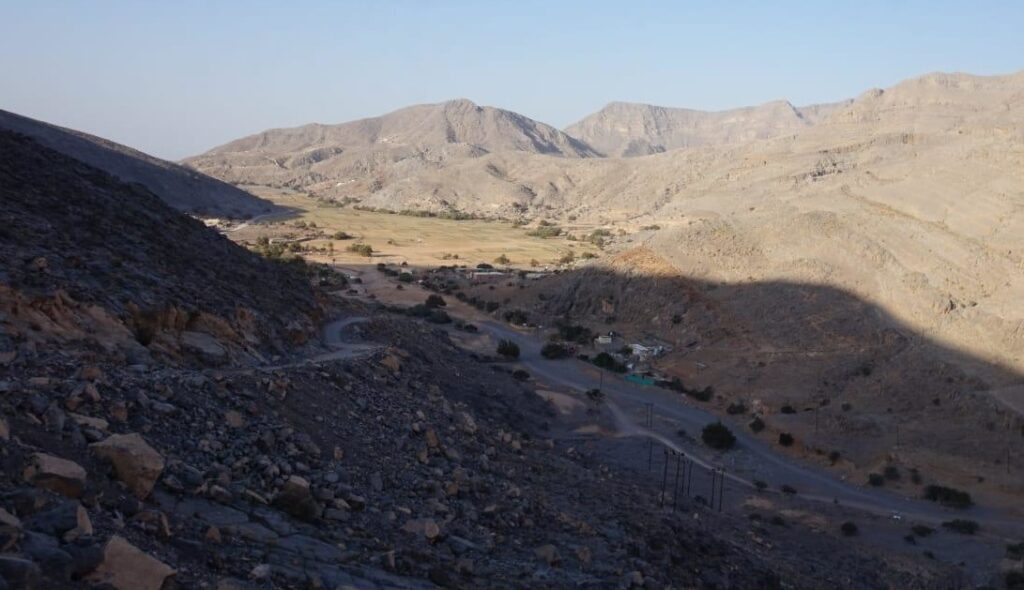
‘Very grim conditions’
As part of the invasion plan, foreign secretary Douglas-Home had specified that “a small team of interrogators would be needed”.
To be known as No 1 Holding Unit, this interrogation team was initially stationed in Sharjah, next to Dubai in what is now the United Arab Emirates (UAE).
The interrogators were led by a “Major H Sloan”. His first name is not given in the declassified telegrams, but records show the British army intelligence corps had a Major Henry Maclaren Sloan in their ranks at that time who appears to fit the description.
The team’s orders stated that prisoners were to be “medically examined and certified fit for interrogation”. They would be checked again upon discharge and records of both examinations were to be preserved.
By 19 December 1970, with Intradon already underway for several days, no detainees had been captured for the team to interrogate. They were considering returning to the UK when Sultan Qaboos’ British military chief, Colonel Hugh Oldham, suddenly requested the interrogation team move to Oman’s capital, Muscat.
New intelligence on “subversive activity” in Oman had been “unearthed which could give useful leads to the team.” The intelligence came from Nizwa, a city in the centre of the country where NDFLOAG members had recently been rounded up.
It was against this backdrop that in January 1971 the new British interrogation team in Muscat received its first four detainees, whose identities and political affinities remain unconfirmed.
The quad were interrogated for up to 59 hours in sessions which spanned 7 days. They were hooded for 30 hours on average, 15 hours of which they were “subjected to sound” from loud, incessant generators.
The hooding and sound techniques “took place only immediately prior to or during breaks in the questioning phase”. When not being questioned, the men were detained in isolation in the “very grim conditions” of the notorious cells at Bait-al-Falaj, a military headquarters near Muscat.
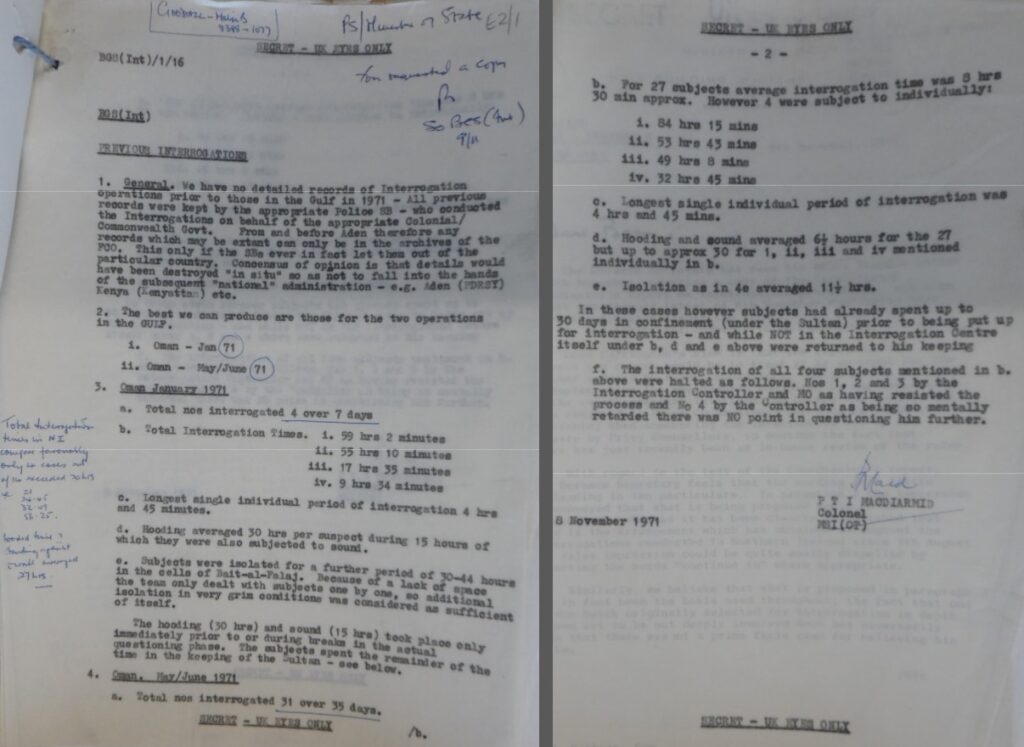
The interrogations of the quad appeared to then stop until May-June 1971, when a further 31 people were interrogated over a five-week period. The identity of these detainees is again unclear from the available archival record, other than that they had “already spent up to 30 days in confinement” under the Sultan.
A researcher from Musandam provided Declassified with the names of ten members of the Shihuh tribe he believes to be among those tortured by the British in 1971, including the man who sustained gunshot wounds during the invasion.
We are publishing their names for the first time in English:
– Ali Mohammed Alyooh Al-Shehhi
– Sulieman Mohammed Alyooh Al-Shehhi
– Murshid Mohammed Al-Shehhi
– Ali Mohammed Al-Shehhi
– Rashid Ali Mohammed Al-Mahboubi Al-Shehhi
– Ahmed Mohammed Ali Al-Mahboubi Al-Shehhi
– Saeed Al-Aqeedah Al-Shehhi
– Ali Mohammed Sulieman Al-Shehhi
– Sultan Saif Al-Qaytaf Al-Shehhi
– Mohammed Zaid Al-Shehhi
The surviving paperwork shows that out of this group of 31 detainees, 27 were interrogated by the British unit for an average of eight and half hours. The remaining four were selected for harsher treatment, with their interrogations ranging between 32 hours and three and a half days.
Although some British troops had been voluntarily subjected to similar conditions on military survival courses, the maximum time their instructors could pretend to interrogate them for was just eight hours.
In Oman, it was relentless. The detainee who was interrogated for 32 hours only had his session stopped because he was assessed “as being so mentally retarded there was no point in questioning him further.” Three others, who were subjected to sessions of 49, 53 and 84 hours each, somehow “resisted the process”.
A debriefing document explains that “hoods, wall standing and noise…were used on each occasion to ensure complete isolation…and to impose a degree of discipline which helped to create a proper working environment.”
Declassified understands the ten men from Musandam believed they were interrogated in Sharjah or Abu Dhabi, whereas the files indicate it took place in Muscat. The fact the men were hooded and held in “complete isolation” would have made it deliberately difficult for them to know where they actually were.
‘Methods of torture‘
These marathon interrogation sessions in Oman might never have come to light had similar techniques not been used in Northern Ireland two months later.
In August 1971, the British army launched Operation Demetrius. Hundreds of people were arrested and imprisoned without trial on the suspicion that they supported the IRA, a militant group fighting to end British control of Northern Ireland.
Among those interned, 14 were selected for “deep interrogation”. They were taken to a secret location and subjected to what became known as the five techniques.
The men were hooded and forced to stand against a wall for hours in painful stress positions – as had been done in Oman weeks earlier. Anyone who failed to remain in the stress position would be forced back into the posture. White noise was played to overwhelm their senses, as they were deprived of food, water and sleep to weaken their resistance.
The combination of these five interrogation methods was carefully designed to leave no marks, but it was so traumatic that the hair of one detainee, 42-year-old school caretaker Sean McKenna, turned from black to white. He died prematurely four years later from a heart attack.
When the interrogations came to light later in 1971, MPs were so outraged that Britain’s Conservative government had to commission an inquiry chaired by England’s top judge, Lord Parker.
He found that the interrogation tactics were illegal under domestic law. Privately, ministers had gone further. Merlyn Rees, a former Northern Ireland Secretary, described the five techniques as “methods of torture”.
But Northern Ireland and Oman were not the only places where such methods had been used. Since the end of World War Two, British soldiers had violently interrogated anti-colonial activists in more than half a dozen territories, from Kenya in 1956 to Yemen in 1967.
The British army’s intelligence corps, which taught soldiers the interrogation techniques, was prepared to mention this “historical narrative” to Parker’s inquiry – but its commandant drew the line at one location: “Oman is such a special case that it should NOT be covered.”
In a handwritten note, a British official commented that “total interrogation times in Northern Ireland compare favourably [to Oman] – only four cases out of 14 exceeded 20 hours.”
The longest use of the interrogation techniques on any detainee in Northern Ireland was around 56 hours, compared to a maximum of 84 hours in Oman.
“Oman is such a special case that it should NOT be covered.”
Senior UK officials were well aware that British troops had subjected detainees in Oman to harsher torture sessions than the Irish prisoners just two months before Operation Demetrius, but hoped to hide it from the Parker inquiry.
The Ministry of Defence (MOD) decided that “no steps should be taken to refer to events in Oman in evidence to the [Parker] Committee” – and the military was only prepared to divulge the extent of what had happened in Muscat “if the point arises specifically”.
Parker’s eventual report did not explicitly mention Oman, instead noting in passing that “some or all” of the five techniques were used in “the Persian Gulf” from 1970-71.
When opposition MP Alex Lyon asked for more background on where and when such interrogations had occurred, ministerial responses omitted Oman, arguably misleading parliament.
The cover up went further. Audio tapes recording the interrogations in Oman were kept by the UK military’s Joint Services Interrogation Wing until at least 1977, when the MOD asked the Foreign Office if there was any objection to the evidence being destroyed.
Back in Musandam
While some Shihuh tribesmen were taken away for interrogation, those remaining in Musandam tried (unsuccessfully) to hold their ground in negotiations with the British invaders.
In June 1971, while the torture was underway, fifty Shihuh told a British army desert intelligence officer that the tribe was “unanimous in their opposition to any Sultanate control.”
The officer concluded the tribe still needed “to be won over, not forced into submission.” Yet military force was never far away from Musandam, with elite SAS troopers continuing to patrol well into 1971.
When some Shihuh staged a skirmish that November, opening fire on an Oman gendarmerie Land Rover, 30 British reinforcements were flown in within an hour and a half. The gun fight lasted for several days, with Britain using mortars to quell the Shihuh.
MOD files indicate that two tribesmen were injured, whereas a local source told Declassified three men were actually killed, naming them as: Ahmed Abdullah Al Assamee Al-Shehhi, Ahmed Saeed Sultan Al Assamee Al-Shehhi and Ali Ahmed Shames Al-Shehhi.
Ultimately, however, most of the fighting against Sultan Qaboos and his British backers in the period would not take place in the Musandam peninsula but in Dhufar, another mountainous region at the opposite end of Oman with its own separatist tendency.
British troops and mercenaries would continue to fight Dhufari guerrillas for many years to come. But the UK ambassador to Muscat would explain in 1980 that Musandam, “with its command of the oil-important Straits of Hormuz, is what the Dhufar War was all about.”
Musandam is today virtually off limits to outsiders, unless they have the right security clearance. In 2019, Prince William visited the peninsula and British military exercises took place – amid fears it would be a flash point if Iran tried to block the Strait of Hormuz.
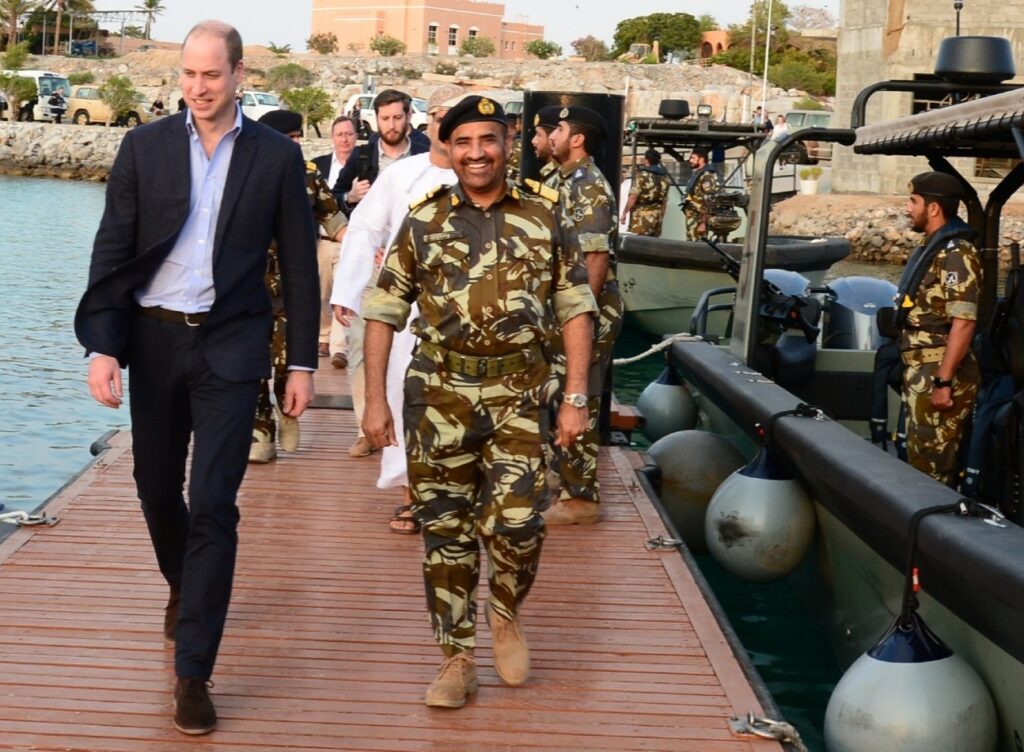
The strategic location means British spy agency GCHQ is rumoured to have built a surveillance station somewhere in Musandam, to intercept communications from across the Gulf. Sultan Qaboos let a company run by an ex-CIA officer build much of the peninsula’s infrastructure.
Locals living in Musandam complain that Omani authorities continue to encroach on their tribal lands and demolish their homes. But the penalties for speaking out are extremely harsh.
When six of the Shihuh shared messages about their situation on WhatsApp and contacted Amnesty International, they were promptly arrested and in 2018 sentenced to life imprisonment.
Although the neighbouring UAE is sometimes suspected of stirring up separatist sentiments in Musandam, it cooperated with Oman in the detention of what became known as the Shihuh 6.
The men were only pardoned following a lobbying campaign by British MPs, during which Oman’s ambassador to London claimed unconvincingly: “There is no discrimination against members of the Shihuh tribe.”
The permanent annexation of Musandam into Oman is not the only legacy of Operation Intradon. After Arab Spring protests in 2011, fresh reports of torture emerged that were strikingly familiar.
The Gulf Center for Human Rights accused Omani security forces of using “hooding, subjection to loud music played 24 hours a day, sleep deprivation, and exposure to extremes of temperature” during detainee interrogations.
But, while such “methods of torture” are still in fashion among Omani authorities, they have seen renewed scrutiny in Northern Ireland in recent years. Mary McKenna, whose father Sean died prematurely as a result of his interrogation, has now taken the issue to the UK Supreme Court.
The Chagossians, meanwhile, have obtained a degree of compensation from the Foreign Office for their displacement while the International Court of Justice ruled in 2019 that the islands do not belong to Britain. The UK government has ignored the verdict, but the UN and global public opinion is now firmly on the side of the Chagos Islanders.
The Shihuh, however, continue to languish in obscurity. And a new law passed by Boris Johnson’s government this year will make it harder for them to ever obtain justice. The Overseas Operations Act introduced a time limit on compensation claims against the MOD, requiring them to be lodged within six years of an incident. This effectively gives the British military immunity for historic abuses abroad like Operation Intradon.
The MOD did not respond to a request for comment.

